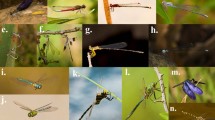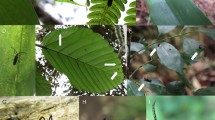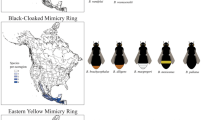Abstract
THERE has just come to hand (Entomologica Americana, 13, No. 3, published (as stated on cover) Nov. 29, 1933, but dated on every page December 1932) a most admirable review of the Polybiine wasps of the Nearctic region, by Dr. J. Bequaert. Unlike many taxonomic papers, it treats not only of the structures of the insects, but also, at considerable length, of their biology, everything being set forth in the most interesting way. There is a good account of the cases of ‘mimicry’ involving these wasps. Thus the wasps of the genus Nectarina, in the neotropical region, belong to an assemblage of diverse insects of similar appearance, of which no less than twenty-eight are cited. Dr. Bequaert recognises the objections to the term mimicry as applied to these cases, and proposes to speak of homeomorphy and homeochromy instead, these terms merely referring to the observed facts, without suggesting any explanation. This seems to be an advantage, though perhaps the shorter words isomorphy and isochromy would be preferable.
This is a preview of subscription content, access via your institution
Access options
Subscribe to this journal
Receive 51 print issues and online access
$199.00 per year
only $3.90 per issue
Buy this article
- Purchase on Springer Link
- Instant access to full article PDF
Prices may be subject to local taxes which are calculated during checkout
Similar content being viewed by others
Author information
Authors and Affiliations
Rights and permissions
About this article
Cite this article
COCKERELL, T. Mimicry among Insects. Nature 133, 329–330 (1934). https://doi.org/10.1038/133329b0
Issue Date:
DOI: https://doi.org/10.1038/133329b0
This article is cited by
-
Numerical and temporal relationships in a three-level food chain
Oecologia (1979)
-
Characteristics of successful natural enemies in models of biological control of insect pests
Nature (1978)
-
Degrees of heterogeneity and the survival of an insect population
Population Ecology (1976)
-
Mimicry in Insects
Nature (1934)
Comments
By submitting a comment you agree to abide by our Terms and Community Guidelines. If you find something abusive or that does not comply with our terms or guidelines please flag it as inappropriate.



